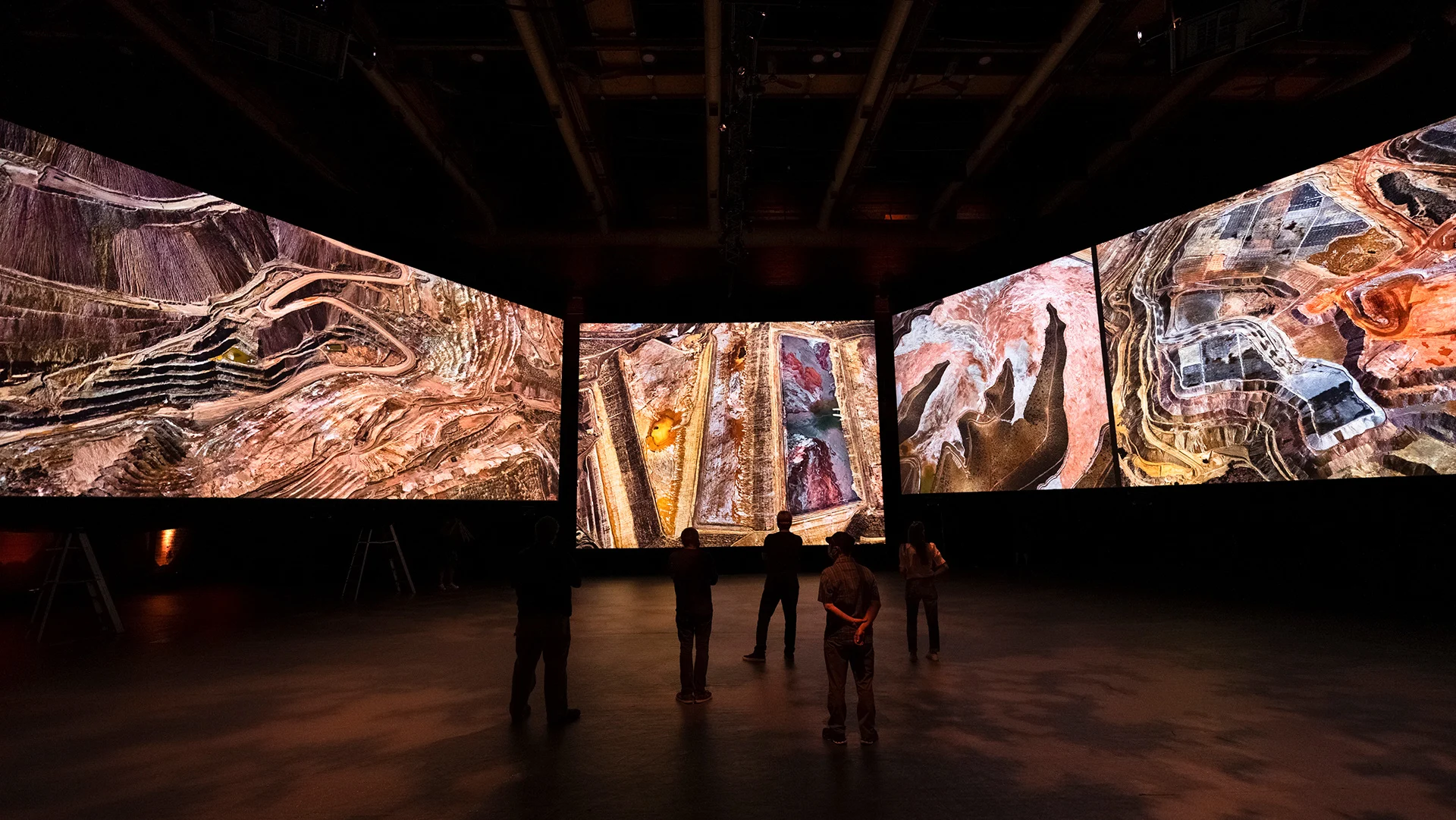
Edward Burtynsky photographs the largest ways we impact the planet
After the world premiere of the Canadian visual artist's multimedia piece on towering screens surrounding Yonge-Dundas Square, the new body of work called In the Wake of Progress has transformed into “an immersive walkthrough experience” at Toronto's Canadian Opera Company Theatre for a limited run from June 25-July 17.
Renowned Canadian photographic artist Edward Burtynsky has launched a new exhibit this month, revisiting his lifelong subject of the human impact on the planet.
Delayed for two years due to the pandemic, the exhibit “In the Wake of Progress” — billed as “an immersive walkthrough experience” — will be a centrepiece of the Luminato Festival in Toronto.
Asked about the timeliness of the project, Burtynsky told The Weather Network, “If we believe the scientists, and I tend to believe the scientists, we have 10 years left. And they said that five years ago, so they're giving us some room to course correct. [But] if we don't have serious movement by 2050, it won't have much of an effect.”
“We're at that point where words aren't enough,” he added. “We need to act.”

Edward Burtynsky in the In the Wake of Progress complementary gallery exhibition at the Canadian Opera Company Theatre in Toronto. (© Jim Panou)
Over a four-decade career, Burtynsky has become one of the most accomplished visual artists in the world by documenting the scars that global industry has left on the natural environment.
His images are known for their vast scope, with depictions of landscapes made gut-wrenching by the sheer extent of the destruction they reveal.
“I worked in industry to put myself through school,” Burtynsky said. “I saw it as a young person firsthand, my father worked in it. He died there as a result of it. And I also had a profound love of nature. And I'm fortunate to be living in Canada as we have so much of it.”
“That natural world, that place where we haven't razed it to the ground, or turned it into a highway, or turned it into an urban or a resource extraction area, is a reference point to what the planet intended to be in that place,” he added.

Installation view of In the Wake of Progress at the Canadian Opera Company Theatre in Toronto. (© Jim Panou)
The photographs can look like abstracts composed of squiggles or concentric circles. But they contain so much more.
The squiggles are oil fields shot from a great height to demonstrate the breadth of the ooze. The circles are the scraped innards of a mine or a seemingly endless dump of tires.
Shot with striking depth and colour, the photographs evoke a terrible beauty by drawing the eye even as the environmental catastrophe they depict unsettles the viewer.
Born in St. Catherines, Ont., of Ukrainian heritage, Burtynsky uses his dramatic images to bring attention to the environmental crises we face with series on quarries, railcuts, salt pans, and the devastating impact industry has on the world’s bodies of water.
His previous project, “Anthropocene,” is a multidisciplinary collection of photography, film, augmented reality, and research aimed at investigating “human influence on the state, dynamic, and future of the Earth.”
“My research is: ‘What's the biggest copper mine? What's the biggest iron ore mine? What's the largest area that's being deforested? Where is the greatest farmland?” Burtynsky said. “And so this piece represents the largest things I could find on the planet that we do as humans.”
“In the Wake of Progress,” the new exhibit, consists of a collection of images from Burtynsky’s career. The photographs premiered at Young-Dundas Square in downtown Toronto on 30-foot high screens where advertisements are typically displayed, and exhibited the story of “humanity’s impact on the planet, the urgency of the climate crisis, and our quest for positive change.”
The walkthrough experience at the Canadian Opera Company Theatre intends to do the same.

Installation view of the In the Wake of Progress complementary gallery exhibition at the Canadian Opera Company Theatre in Toronto. (© Jim Panou)
Arresting shots of landfills, logging, immense parking lots and other scenes of industrial destruction on a grand scale are set to a score by composer Phil Strong and vocals by the Cree Métis artist iskwē.
The Canadian music icon Bob Ezrin and The Royal Conservatory of Music were also involved with the production.
“If you get it right, then it really touches people where it counts,” Burtynsky said. “My hope is that when people see this piece that they are viscerally and emotionally touched by it. I like the idea that you stand through, because I think we need to stand up and pay attention.”
“Because this is something that isn't going away,” he added. “It's something that if we have children they're going to look at us and say, ‘What did you do when you knew what was going to happen?’”
Thumbnail image: Installation view of In the Wake of Progress at the Canadian Opera Company Theatre in Toronto. (© Jim Panou)











